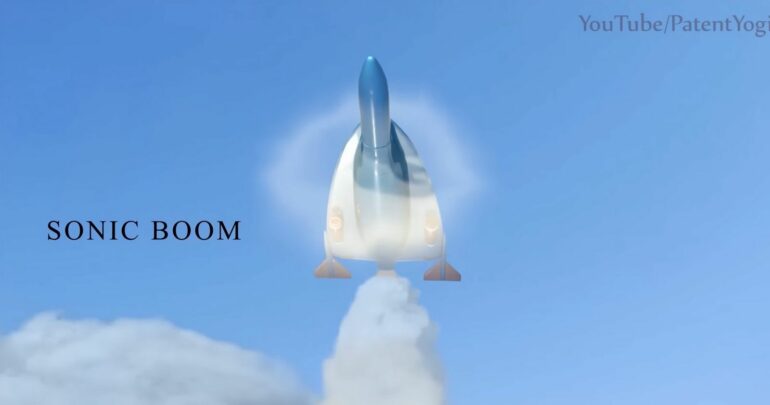It’s been over two decades since the iconic Concorde flew for the last time, taking away with it the glory days of aviation, where celebrities and well-heeled businessmen flew supersonically over the Atlantic Ocean. There are several companies across the world that are working hard to bring back supersonic commercial air travel, including Lockheed Martin and NASA, which recently revealed the X-59 experimental aircraft. Interestingly, Airbus patented a revolutionary supersonic jet design back in 2015 that promised to fly at more than two times the maximum speed of the Concorde. According to the patent documents, the “ultra-rapid” jet featured a design that made it capable of traveling up to about 4.5 times the speed of sound, making it fast enough to get from London to New York in just one hour.

The patent describes the supersonic aircraft as “an air vehicle including a fuselage, a gothic delta wing positioned either side of the fuselage, and a system of motors able to propel the air vehicle.” While the Concorde also featured a delta wing design, it was powered by four Rolls-Royce Olympus turbojet engines with variable engine intake ramps and reheat for take-off and acceleration to supersonic speed. The biggest issue the iconic supersonic jet faced was the destructive sonic boom caused after breaking the sound barrier, which got it banned from flying at supersonic speeds above land. The conceptual aircraft by Airbus mitigates this problem with its unique design, propulsion systems, and its unusual flight path.

The Airbus supersonic jet is powered by three different types of engines working in sequential order. A pair of traditional jet engines are located at the bottom of the fuselage that power the aircraft only while taking off and landing. Once the aircraft takes off like a traditional jet from a runway, the jet engines retract into the fuselage to reduce drag. A pair of rocket engines at the rear take over, and the supersonic jet goes completely vertical like a space rocket until it reaches an altitude of more than 100,000 feet. After reaching cruising altitude, which is almost at the edge of space, the rocket motors shut down and retract behind a flap. At this point, a pair of wing-mounted ramjets kick in and propel the aircraft to a top speed of Mach 4.5 (about 3453mph).

The aircraft features specially designed delta-shaped winglets that can change and rotate around its central axis. Its job is to limit the sonic boom, which was a major problem for Concorde when it flew over land. With a top speed of Mach 4.5, it’s also more than twice as fast as the Concorde, thanks to which it can complete the journey from Paris to San Francisco in less than 3 hours. The patent application reveals that the aircraft in a civil application is designed to carry up to 20 passengers and feature hammock-like seats. Airbus also proposed a military version that could serve as a reconnaissance plane like the SR71 Blackbird. However, it has been more than eight years since the patent was awarded to Airbus, and we haven’t heard anything else about the revolutionary supersonic jet concept ever since. While we don’t expect to see a production version anytime soon, hopefully, the project has not met with a dead-end.

